
Gua sha is a technique involving the scraping of a blunt tool across the skin. Proponents tout the technique’s ability to release unhealthy matter from sore or injured muscles and promote cell repair and healing.
Gua sha is a practice of traditional Chinese medicine and has spread to many different cultures. It is also known as kerokan, coining, or scraping, though these terms also refer to traditional techniques that are distinct from gua sha.
01
The technique
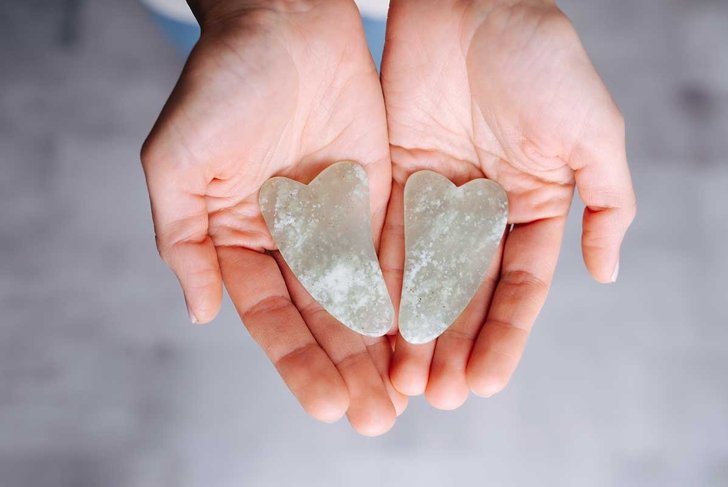
Gua sha is done by forcefully stroking the skin—usually lubricated with massage oil or balm—with a smooth, blunt instrument. The smooth edge of the tool is placed against the skin, pressed down firmly, and then moved along the muscles. Some practitioners follow the pathways of the acupuncture meridians rather than the flow of the muscles.
A typical stroke is between four and six inches long. When treating cases of fatigue, practitioners sometimes soak ginger root in rice wine and rub it along the spine, first.
02
Gua sha tools
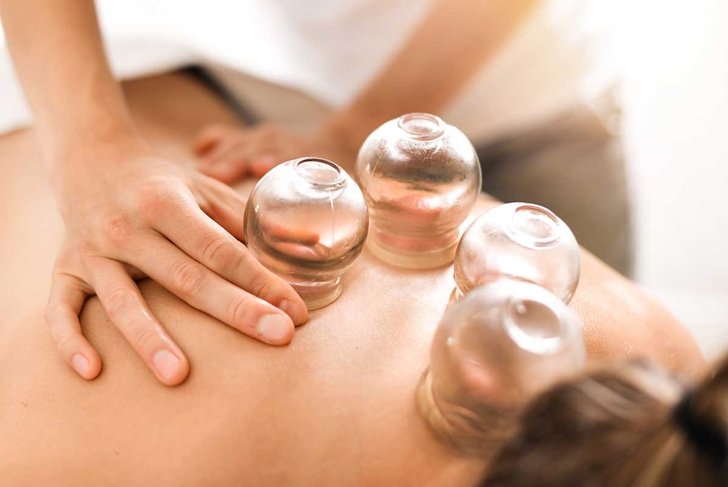
Throughout gua sha\’s history, practitioners have used a variety of implements. The most common choice is a ceramic Chinese soup spoon. Other tools include blunt coins, water buffalo horns, honed animal bones, jade, and even simple metal cups with rounded edges.
Many practitioners of gua sha also perform fire cupping, sometimes combining the two techniques. Fire cupping typically involves the use of small glass, bamboo, or metal cups, which are made to suction onto the skin.
03
Muscle and joint pain
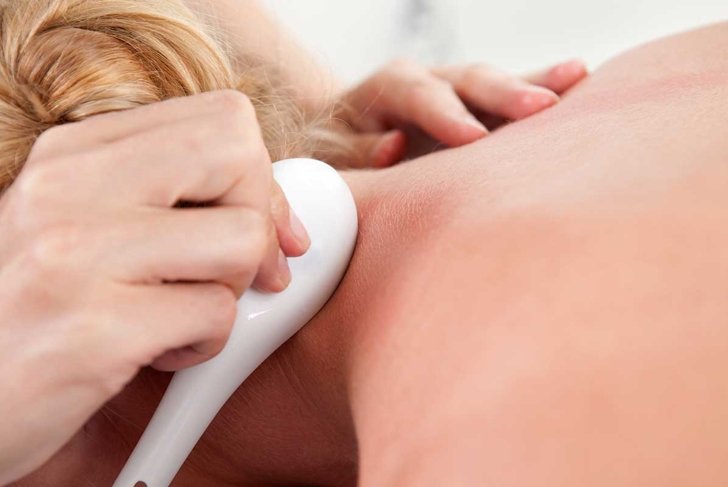
As with many traditional treatments, proponents of gua sha claim that its effects are wide-reaching and can improve a range of conditions. One of the most common assertions is its impact on muscle and joint pain.
Practitioners offer gua sha to manage carpal tunnel syndrome, tendon strain, and back pain. One study of 60 people found that gua sha slightly improved pain levels and cervical range of motion in people with neck and shoulder pain from computer use. Weightlifters who participated in a similar study felt that lifting weights became easier after undergoing treatment.
04
Immune system benefits
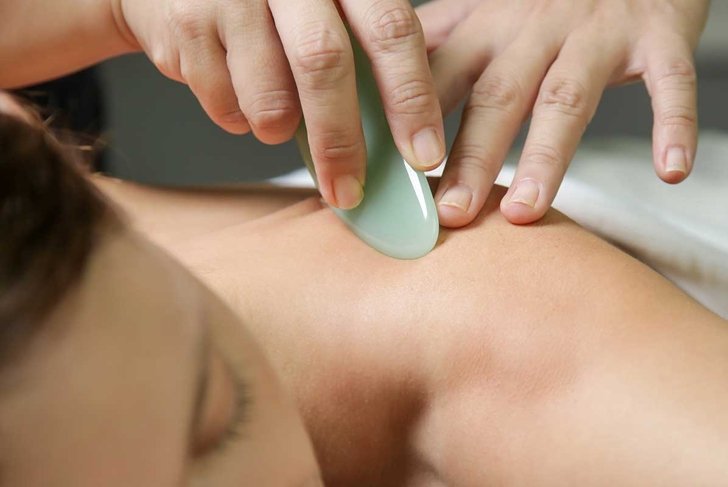
Tradition points to gua sha’s ability to boost the immune system and reduce inflammation, treating conditions like the common cold, fevers, and respiratory issues affecting the lungs.
Though there is a lack of scientific research supporting these assertions, one animal study found that gua sha could decrease inflammation and improve pain levels in rats with lumbar disc herniations.
05
Treating fibrosis
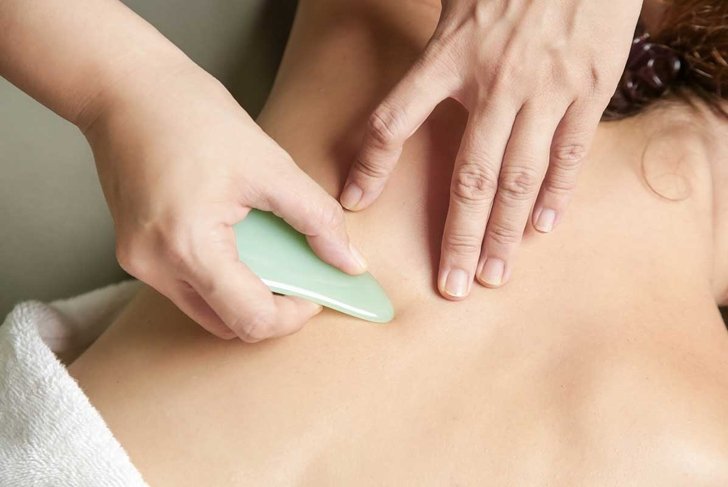
Fibrosis, also known as fibrotic scarring, occurs when connective tissues replace the typical parenchymal tissues, resulting in permanent scar tissue.
Gua sha causes tiny bruises and scratches, known as microtrauma. The idea is that these microtraumas trigger a response that helps break up scar tissue from fibrosis. However, there is little research into these claims.
06
Gua sha for perimenopause
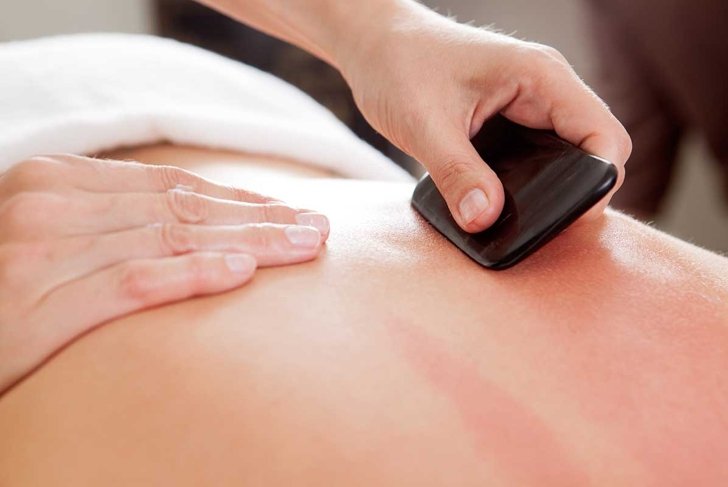
Perimenopause refers to the period where the body begins to transition to menopause, marking the end of a person\’s reproductive years. Perimenopause starts at different ages and affects people in different ways.
Common symptoms of perimenopause include mood changes, irregular periods, hot flashes, sleep problems, bladder issues, and changes in sexual desire. A study of 80 perimenopausal women found that a combination of weekly gua sha treatments and traditional therapy alleviated many of their symptoms.
07
Facial gua sha
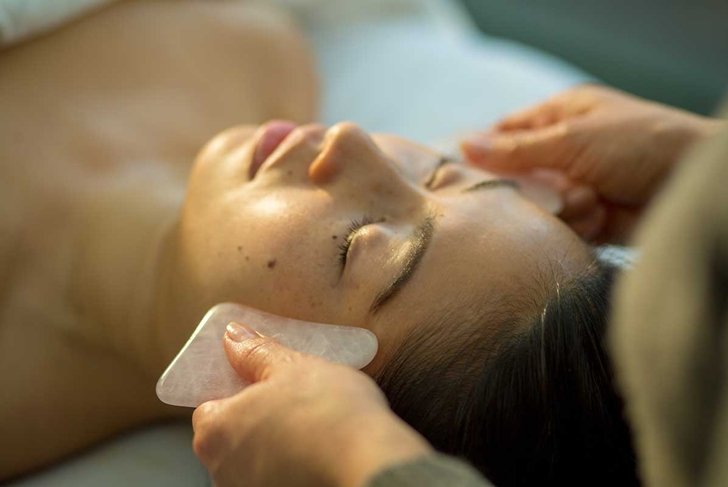
In recent years, many people have moved away from the intense, full-body gua sha and embraced more gentle alternatives. This treatment works on the same premise as traditional gua sha. A person will massage their face along their acupressure points with a blunt tool, stimulating the circulatory and lymphatic systems.
Proponents say the practice can reduce facial puffiness, encourage the movement of lymphatic fluid, and eliminate congestion. A small amount of evidence shows gua sha can improve circulation.
08
Potential side effects
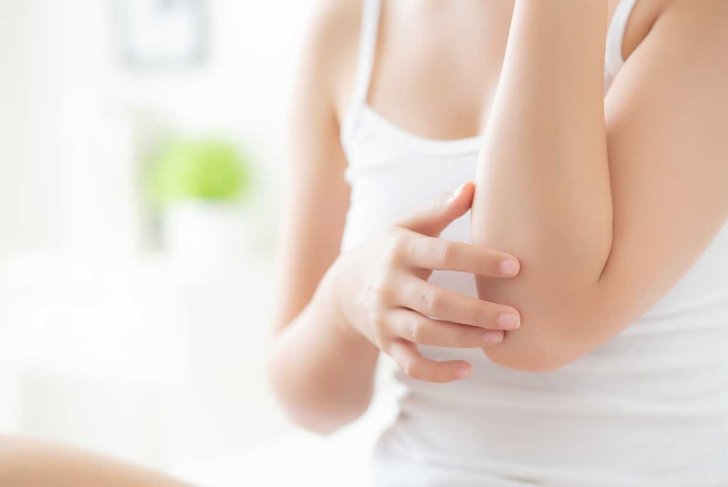
Gua sha almost always results in minor skin damage, as the goal is usually to induce microtrauma. However, in some people, this damage can trigger side effects ranging from minor issues to life-threatening problems. Common side effects include dermatitis, skin burns, and blood in the urine.
In rare cases, experts have recorded gua sha causing injuries severe enough to require skin grafts, though these treatments were likely done by unqualified individuals. Additionally, bone and horn cannot be sterilized, so there is a risk of infection.
09
Controversies around gua sha
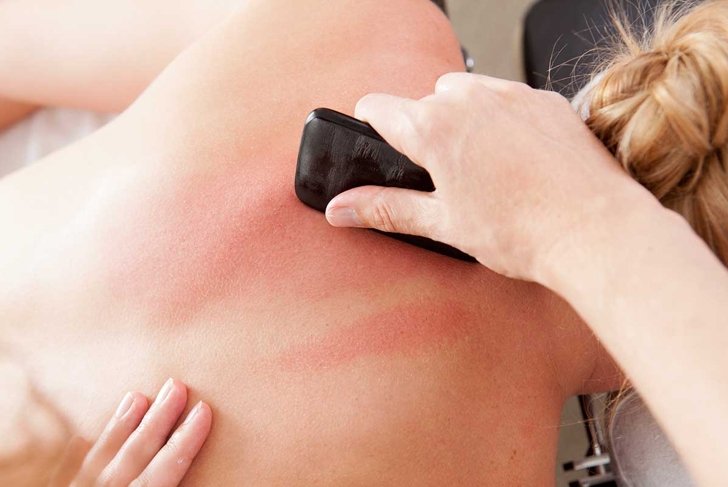
Gua sha has been the subject of a significant number of controversies in recent years. Notably, critics of traditional medicine point to the low-quality evidence supporting most of the health claims.
Additionally, cultural differences have resulted in clashes in the healthcare system. Healthcare workers in America sometimes come across children who show bruising and scarring from recently undergoing gua sha treatment.
10
The history
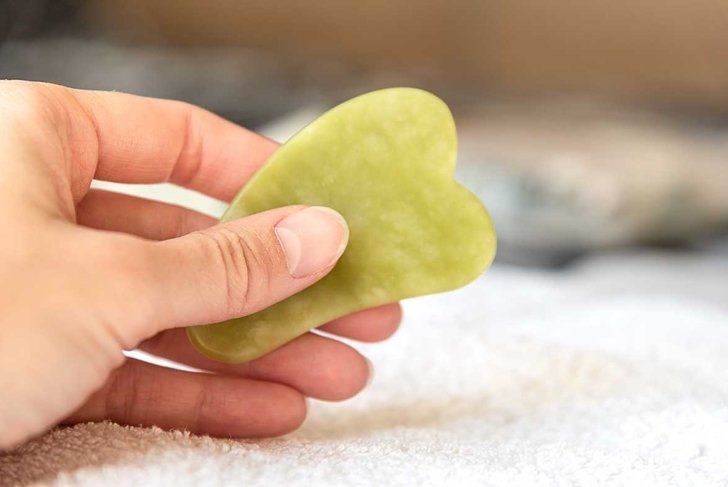
It is unclear how long gua sha has existed as a medical practice. Current records allow us to trace the technique back to the Ming Dynasty, between 1368 and 1644. Some practitioners of gua sha claim that it dates back to the Paleolithic Age when humans first used stone tools. The literal translation of gua sha is \”to scrape petechiae,\” referring to the speckled bruising that occurs after treatment.



